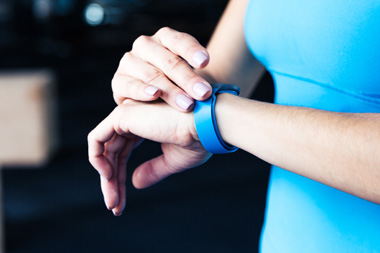Five wearable fitness functions and what bosses say about them

Fitbit’s IPO has busted blocks on the markets – but how do bosses think wearable devices can be used to improve employee engagement and boost staff morale?
Jermaine Haughton
Pulses would surely have rocketed among management and leadership figures at wearable tech company Fitbit this week, following its extraordinary $4.1bn valuation through an initial public offering. While managers at the fitness-tracking wristband maker initially expected to sell shares for between $14 and $16 each, the firm eventually managed to raise $732m after shares sold for $20 each.
Fitbit’s popularity with investors reflects the firm’s sharp rise in profits during the past 18 months. After around four years of consistent losses, the fitness technology firm made a profit of $131.8m last year after sales of more than 10 million units took effect on the balance sheet.
However, Fitbit’s stock market success has occurred in the wake of two patent lawsuits from rival Jawbone. In the first case, filed on 28 May, Jawbone’s parent company AliphCom accused Fitbit in a San Francisco Court of poaching five Jawbone employees, who were alleged to have stolen intellectual property. Just two weeks later, at the same court, Fitbit was accused of infringing Jawbone patents, with Jawbone seeking an injunction to block Fitbit sales. The defendant denies both sets of allegations.
That competitive intensity between the parties recalls the long-running patent disputes between Apple and Samsung, and shows how hard it is to differentiate products in a market where many dynamic tech firms are vying for dominance. Helpfully, big-name business brains can always be relied upon to air their views on the key functions of some market-leading products – and what effect they can have on staff morale…
1. Activity tracking
Maine-based institution Bates College offered Fitbit Zip devices to staff as an incentive for taking part in group-running programmes, as it tracks users’ movements. Bates’ Wellness Programme director Mike Milliken said that the tactic was an important way of encouraging workers to be more active – particularly in Maine’s chilly climate. “It's getting groups of people moving, despite the harsh winter temperatures and storms,” he said. “When we issued them initially, we were upfront about the fact it wasn’t simply a gift for signing up. They needed to earn it by using it, and that seems to be driving engagement.” (Source)
2. Calorie counting
Tim Hale – vice president of sales at game-rental kiosk firm Outerwall Inc. – said that the use of fitness bands inspired competition between employees to lose weight. “If you know there is someone higher than you on the rankings,” said Hale, who has lost 40lbs with the aid of fitness bands, “it definitely puts the pressure on you. I’m almost a slave to it.” (Source)
3. Distance counting
The health tracking bands also monitor the walking patterns of a user has taken, allowing an individual to know exactly how many steps they have taken per day and for how long. A useful tool reminder to employees that they must be mindful not to sit down all day, Elizabeth Oviedo, a manager at tech company Symmetry, said: “We have had so much fun as an office using the Fitbits talking about our rankings, and now, taking daily breaks to walk around our building to boost our daily steps.” (Source)
4. Stress monitoring
With recent research from Virgin Group showing that many managers and staff are struggling to switch off from work, the importance of working within reasonable energy levels has been high on the agenda – and some firms have employed wristband monitors to ensure their workers aren’t pushing it. Brenda Morris, UK head of tech firm Kronos, said that stress monitoring is just as important for blue-collar workers as their white-collar peers. “If you’re monitoring where people are, what their stress levels are, what their fatigue levels are,” she said, “[that’s] really important when operating machinery … Or [in an office] you can see that person’s getting stressed because they’ve been working on that legal contract for too many hours and they don’t have enough support.” (Source)
5. Smartphone and PC compatibility
Fitness wearables are becoming ever more enmeshed with Bluetooth and Wi-Fi, along with Android and iOS smartphones and Mac or Windows computer systems, allowing users to share their progress with friends and colleagues. Shannon Daly – vice president of cloud software firm Appirio – says that these features have stimulated more positive discussion about fitness goals among employees and that, as a result, “Appirio has a more tight-knit and connected company culture.” (Source)
Click here for eight essential ways to beat workplace stress.

Press & Media Enquiries
For more information or to request interviews, contact CMI's Press Team on 020 7421 2705 or email press.office@managers.org.uk


